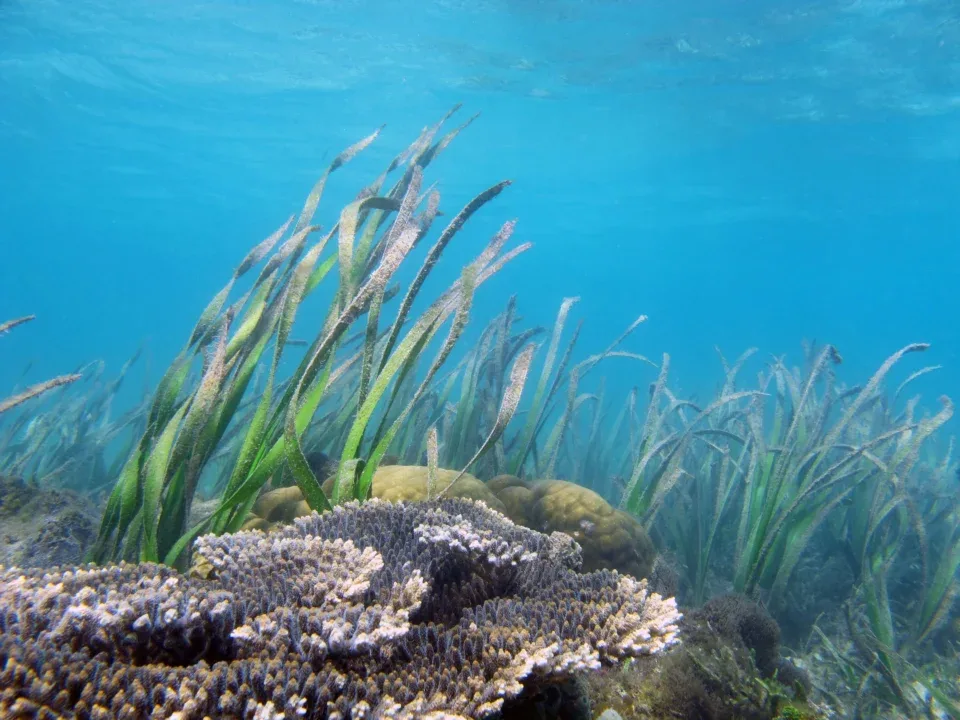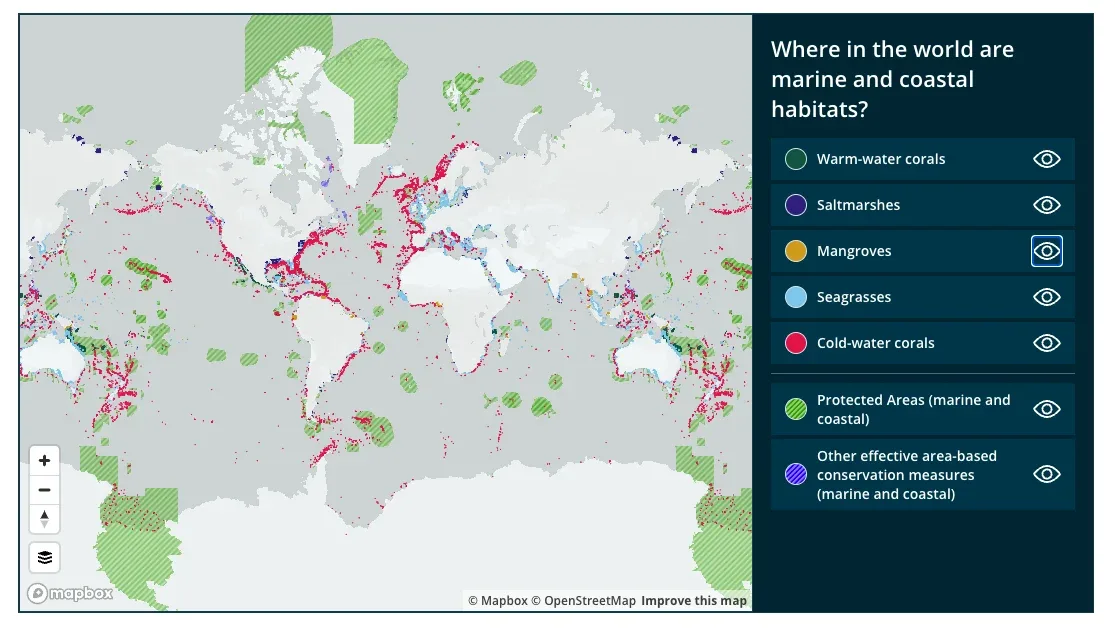Did you know?
- Seagrass meadows exist in 159 countries on six continents, covering over 300,000 km2, making them one of the most widespread coastal habitats on Earth.
- Almost 30% of global seagrass area has been lost since the late nineteenth century and at least 22 of the world’s 72 seagrass species are in decline.
- Seagrasses, as a part of the marine ecosystem, store up to 18% of the world’s oceanic carbon.
- Conserving and restoring seagrass meadows can also help countries achieve 26 targets and indicators associated with ten Sustainable Development Goals (SDGs).
The presence and health of seagrass habitats are closely linked to the health and resilience of coral reef ecosystems:
- Habitat and Nursery – Seagrass beds serve as important habitats and nurseries for many species of fish and invertebrates. Juvenile stages of various reef fish species, including commercially important ones, often rely on seagrass beds for food and protection from predators.
- Stabilisaton of Sediments – Seagrasses have extensive root systems that help stabilise sediments. This reduces erosion and maintains water clarity by preventing sedimentation on nearby coral reefs.
- Nutrient Cycling – Seagrasses are highly productive plants that capture nutrients from the water column and sediment. They help to regulate nutrient levels in coastal waters, which can be crucial for maintaining the delicate balance necessary for coral reef health.
- Carbon Storage and Oxygen Production – Like terrestrial plants, seagrasses photosynthesise, absorbing carbon dioxide from the water and producing oxygen. This process helps to mitigate ocean acidification and provides oxygen to adjacent ecosystems, including coral reefs.
- Protection – Seagrass beds can act as a buffer, absorbing wave energy and reducing the impact of storms and wave action on adjacent coral reefs.
Protecting and conserving seagrass beds is essential for maintaining the biodiversity, productivity, and ecological functions of coral reefs.

Photo Credit: Fanny Kerninon

